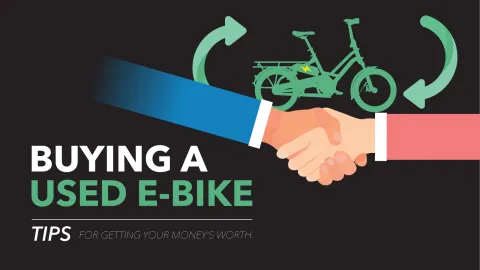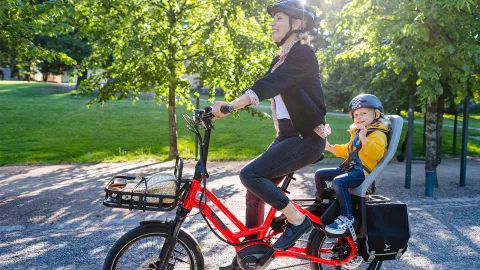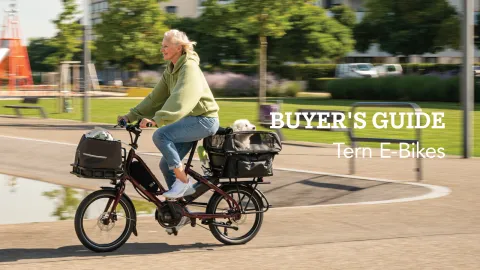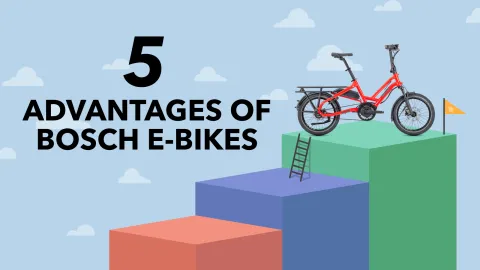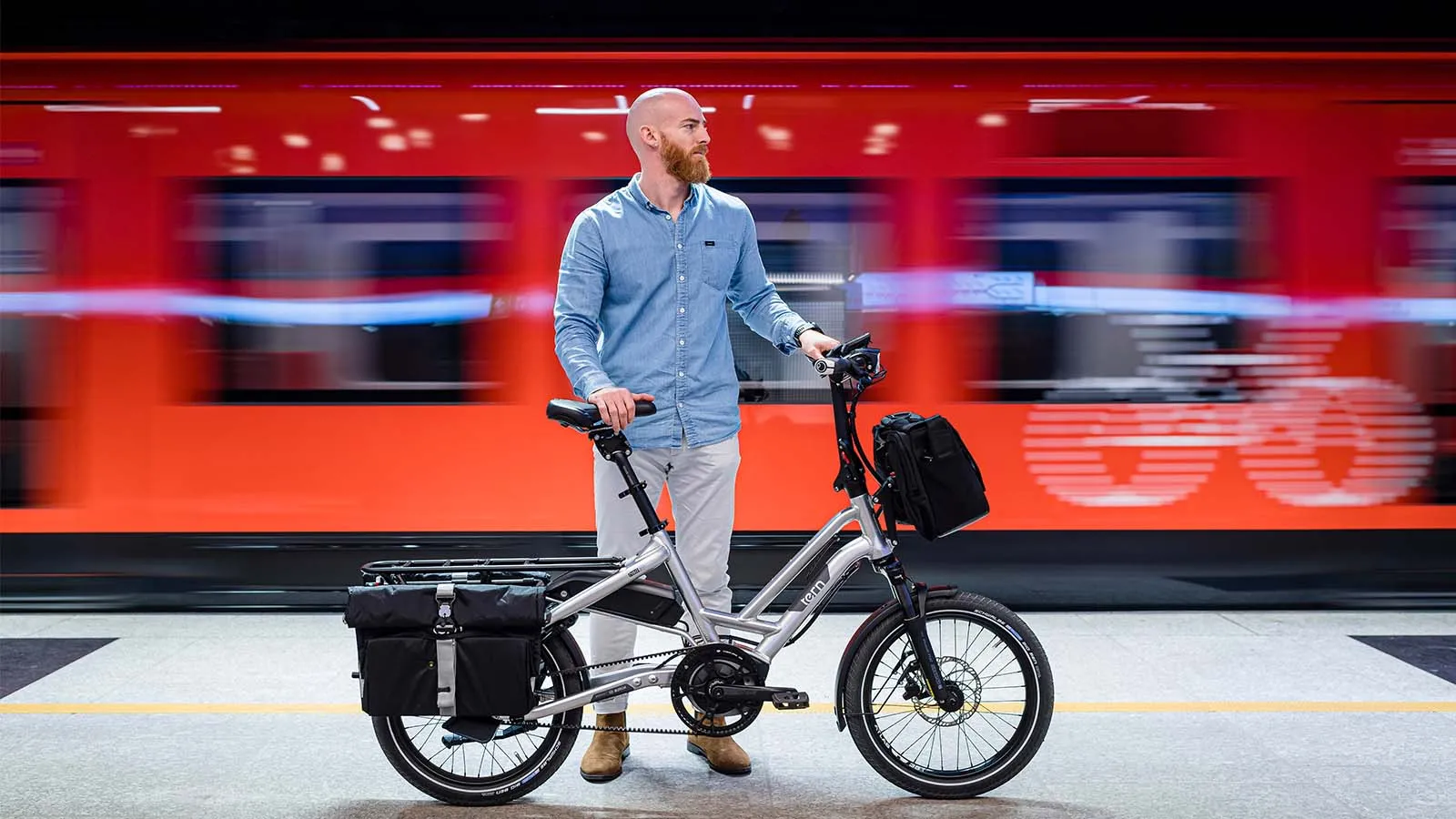
There are so many advantages to commuting by bike. Many people would say that improving your health and doing your part to protect the environment are both priceless.
But there's one benefit of e-biking you can put a price tag on, and that's the cost savings. Whether you choose a conventional bike or an e-bike, the potential boost to your wallet is huge.
Since e-bikes are booming—and since they make replacing car trips with bike trips so easy to do—we'll focus on them in this article. We've calculated just how much money you can save by e-biking instead of driving. The answer: well over $6,000 a year.
How is that possible? We'll break it down for you in this article.
Two Types of Vehicle Costs
First, let's define what we mean when we talk about vehicle costs.
There are two types of vehicle costs: operating costs and ownership costs. Operating costs include fuel, maintenance and repairs, parking, and tolls (if any). As you can see from this chart (based on data from 2022, in USD), e-bikes offer significant savings from fuel alone.
As it turns out, both the operating costs and the ownership costs for e-bikes are dramatically lower than those for cars. If you're looking for ways to trim your budget (and who isn't?), e-bike ownership is something to consider.
Let's take a closer look at each category.
Operating Costs
Operating costs include fuel, maintenance and repairs, parking, and tolls (if any). As you can see from this chart, e-bikes offer significant savings from fuel alone.
Operating Costs for a 10-Mile Round Trip
| Car (Medium Sedan) | HSD P9 | |
|---|---|---|
| Fuel | $1.441 | $0.01 per kWh2 |
| Maintenance, Repair, & Tires | $1.103 | $1.084 |
| On-street, 1-hour parking | $1.775 | Free |
| TOTAL | $4.31 | $1.09 |
Savings: $4.31 - $1.09 = $3.22
If you replaced one average car trip with an e-bike trip five days per week for one year, you’d save at least $837.206 per year—likely more, depending on the cost of parking in your area. Believe it or not, a little over $10 should buy an average commuter enough electricity to charge their e-bike battery for an entire year.
How much gas can you get for $10?
And if you live in a good-sized city where parking comes at a premium, this chart likely underestimates how much you'll save in parking fees and fines (and it doesn't even take into account the value of the time you spend hunting for parking).
Depending on the type and age of your car, you may also save a bit on maintenance. The amount saved on maintenance increases with the age of your car, as older vehicles cost more to keep running. The cool thing is, operating cost savings from e-biking happen even if you need to keep your car—and the more you ride, the more you save.
If you replaced one average car trip with an e-bike trip five days per week for one year, you’d save around $837 per year. Now that's some solid motivation to ride.
Ownership Costs
What if you want to go one step further and actually use an e-bike to get rid of your car? That could mean going completely car-free or eliminating your family's second car.
To find out how much you'd save, you need to add in the ownership costs of e-bikes vs. cars. Ownership costs include insurance, depreciation, license, registration, and taxes. Any finance charges you may have also count as an ownership cost.
Here's how the ownership costs break down:
Annual Ownership Costs
| Car (Medium Sedan) | HSD P9 | |
|---|---|---|
| Insurance | $1,6947 | $2798 |
| License, Registration, Taxes | $6229 | FREE |
| Depreciation | $3,70310 | $528.4311 |
| Finance Charge | $58112 | None |
| TOTAL | $6,600 | $807.43 |
Savings: $6,600 - $807.43 = $5792.57
Even if you have no car payment, replacing your car (or your second car) with an e-bike would save you around $5,094 per year.
As you can see, replacing your car with an e-bike could save you around $5,800 per year in ownership costs (more if you own anything bigger than a medium sedan). Pair that with the lower operating costs of riding an e-bike, and all of a sudden you're looking at a lot of extra cash.
Pair that with the lower operating costs of riding an e-bike, and all of a sudden you're looking at a lot of extra cash.
How much extra? Well, let's say you sell your second car and use part of the proceeds to buy a Tern HSD. You use the HSD to drop your child off at daycare each day, ride to work, and pick up the child on the way home. The total commute length is 10 miles each day, including all stops. You also use the HSD for biweekly grocery runs and other errands, racking up an additional 5 miles each week.
That means you'd be e-biking instead of driving around 2,860 miles each year, for an operating cost savings of $837.20. Now add the $5,792.57 you'd save by not owning a second car, and you get $6,629.77 per year. Who couldn't use that kind of money?
It's important to remember that these are estimates, and your exact savings will depend on many factors that only you can determine. But if you wanted to, you could sit down and calculate exactly how e-bike ownership will affect your family's budget, using these numbers as a starting point.
And don't forget—with all the extra exercise you'll be getting, you may be able to cut out your gym membership and a few doctor's visits, too.
Ready to test-ride an e-bike? Find your nearest Tern dealer here.
1 Based on $0.1437 per mile. Your Driving Costs, by AAA (American Automobile Association), 2022.
2 Assumes the maximum battery range of the Tern HSD P9, which is 400 Wh (0.4 Wh) for up to 69 miles (110 km). Electricity cost of $0.1152 per kWh. US Energy Information Administration, Table 5.6A, Average Price of Electricity to Ultimate Consumer by End-Use Sector > Transportation, December 2022, U.S. Total.
3 Based on $0.1064 per mile. Your Driving Costs, by AAA (American Automobile Association), 2022.
4 Based on the costs of an HSD P9’s chain, rotor, front and rear brake pads, tires, and tubes.
5 North American Parking Index, Parkopedia, 2019. From the Top 50 Cities for 2-hour On-Street Prices, we took #25 (St. Louis, MO), which has a 2-hour rate of $3.00. We then used the US Bureau of Labor Statistics CPI Inflation Calculator to compare prices between January 2019 and December 2022, when there was an inflation rate of 18%.
6 $3.22 x 5 days per week x 52 weeks per year = $837.20 in total.
7 Your Driving Costs, by AAA (American Automobile Association), 2022.
8 Quote from Velosurance for an HSD P9.
9 Your Driving Costs, by AAA (American Automobile Association), 2022.
10 Your Driving Costs, by AAA (American Automobile Association), 2022.
11 For the P9, assuming a straight-line depreciation over a 7-year period: $3,699 (MSRP) / 7 ≈ $528.43.
12 Your Driving Costs, by AAA (American Automobile Association), 2022.
No matter where you live, you’ve probably noticed that the popularity of e-bikes is surging. And the segment of the population that rides e-bikes is getting broader, too.
Everyone’s getting on board, from seniors to young families to sports cycling enthusiasts. In at least one country, e-bikes now make up the majority of bicycles sold.
If you're new to e-bikes, you probably have a few questions—like, are e-bikes really worth the hype? And are they here to stay, or just another trend?
Read on to learn the answers to some of the most commonly asked questions about e-bikes.

Are e-bikes good exercise?
One of the main benefits of cycling is all the exercise it adds into your day. Who hasn't seen a lean, fit-looking bicycle commuter whizzing by and thought ... "I should really get on my bike more"?
Since the whole point of an e-bike motor is to make pedaling easier ... and exercise is supposed to be hard, unpleasant work ... many people assume e-bike riders aren't getting the same fitness boost as conventional cyclists.
Some people even say that e-bike riders are cheating.
In fact, studies have shown that the opposite is true—e-bike riders actually get more exercise than conventional cyclists.
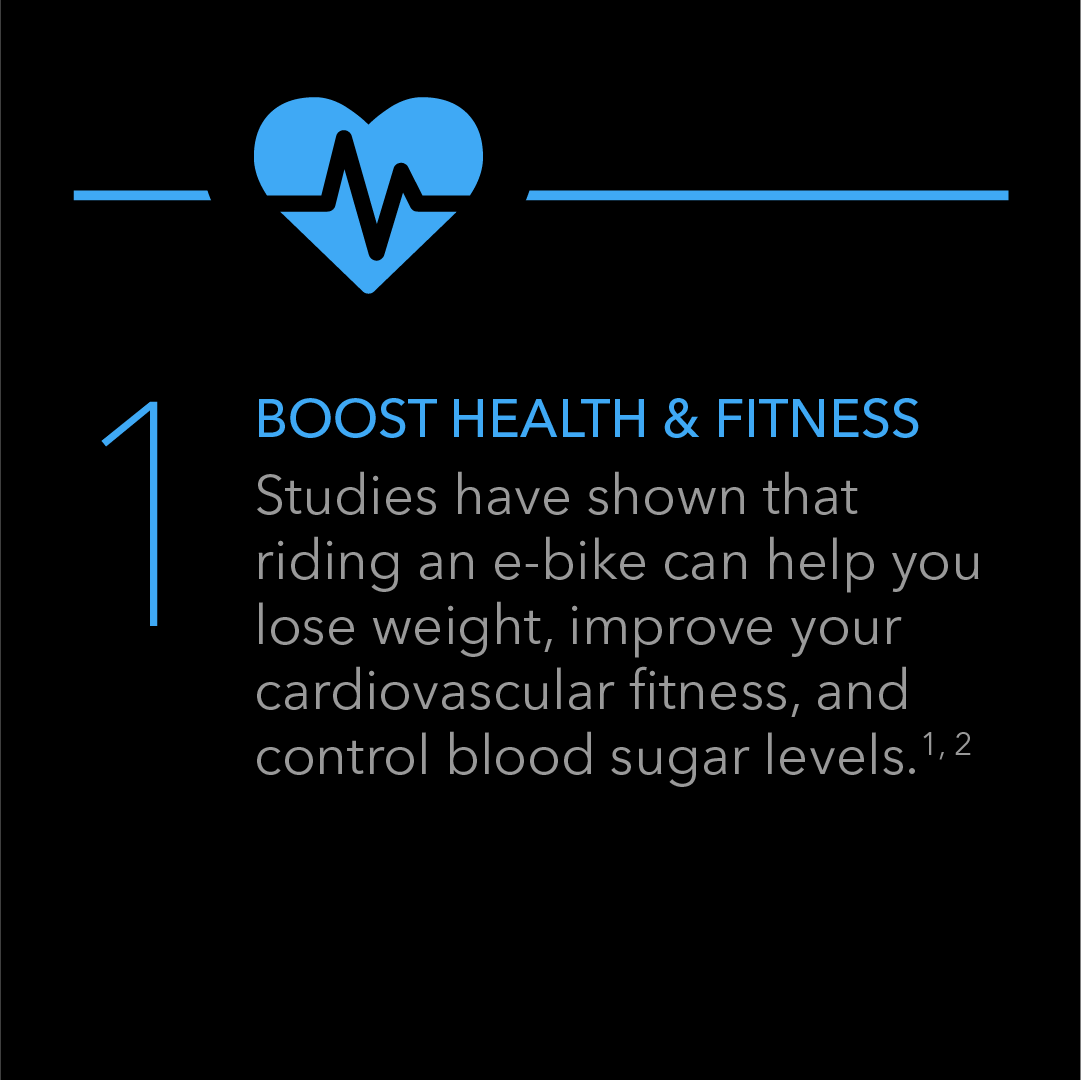
The reason is pretty simple. Riding an e-bike is super fun, so e-bike owners ride further and more often—which adds up to more aerobic exercise overall.
And that comes with all the health bonuses you'd expect. Researchers have found that e-biking can help you lose weight, improve your cardiovascular fitness, and control your blood sugar levels.
Starting to sound like a pretty good investment, right?
Can e-bikes go up steep hills?
Okay, so we've established that e-bikes aren't cheating, per se, but what about those times when you'd love to have a shortcut? Like say, that giant hill standing between you and cycling to work every day?
This one's easy: e-bikes can go up steep hills.
Even though pedelec bicycles like the Tern HSD require you to pedal continuously, the motor system is powerful enough to make hill-climbing awfully easy.
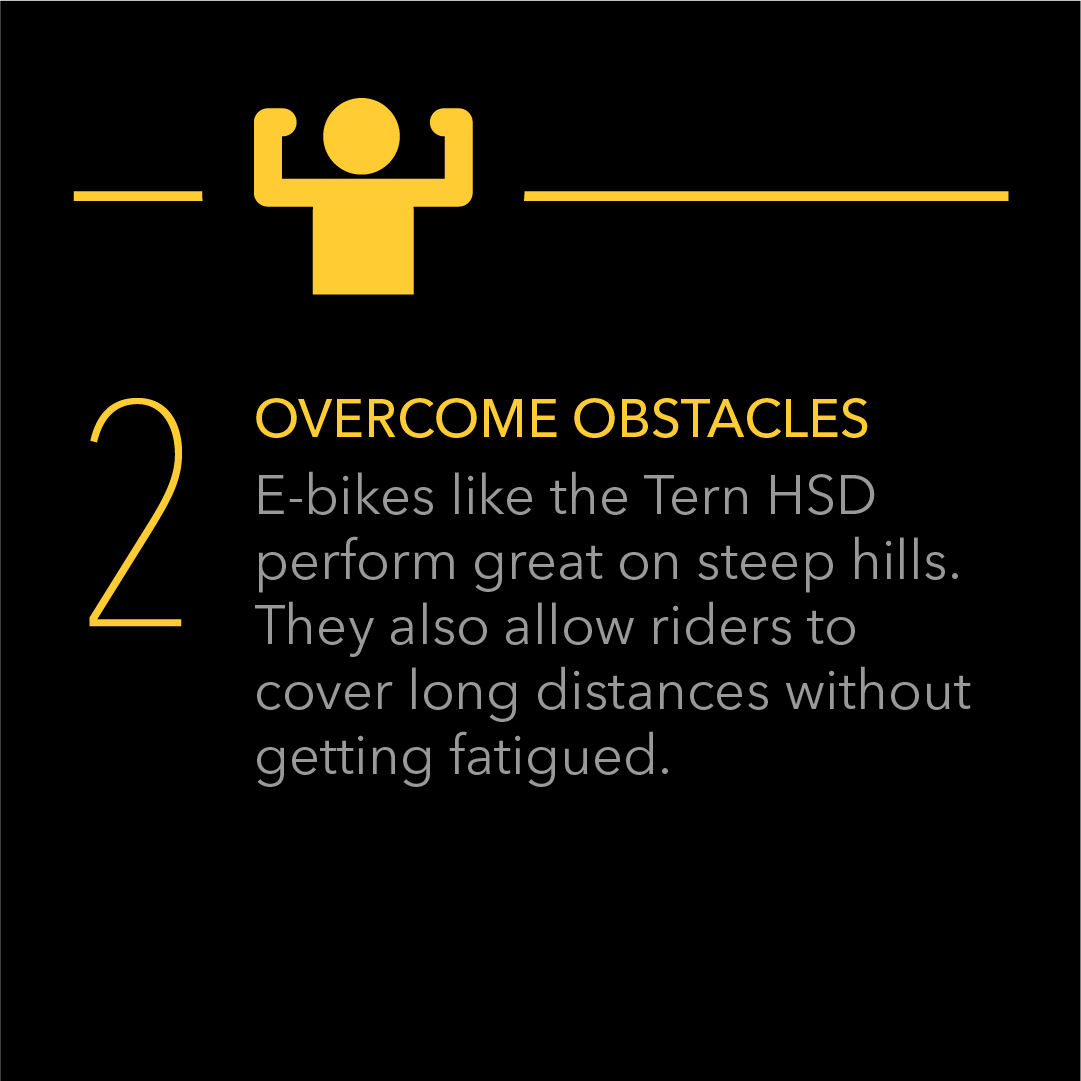
Even in very hilly areas—think San Francisco—you'll be able to maintain a faster speed with much less effort than on a conventional bike.
Of course, if you're in the mood for a workout, you can always turn the e-assist down a notch and use more of your own power to climb.
And e-bikes' hill-climbing superpowers feed right back into their overall health benefits. Wouldn't you ride your bike more often if you had an optional "easy mode" for steep climbs?
Can an e-bike replace a car?
Whether an e-bike can replace a car depends on your lifestyle—but it's probably way more possible than you think.
If you purchase a high-quality e-bike with significant cargo capacity, you should be able to run most of your everyday errands by bike.
And for many people, e-bikes make bicycle commuting more do-able. E-bikes make it easier to cover long distances by bike, and they let you do it without donning fancy cycling gear and getting sweaty. In most climates, you won’t need a shower when you get to work.
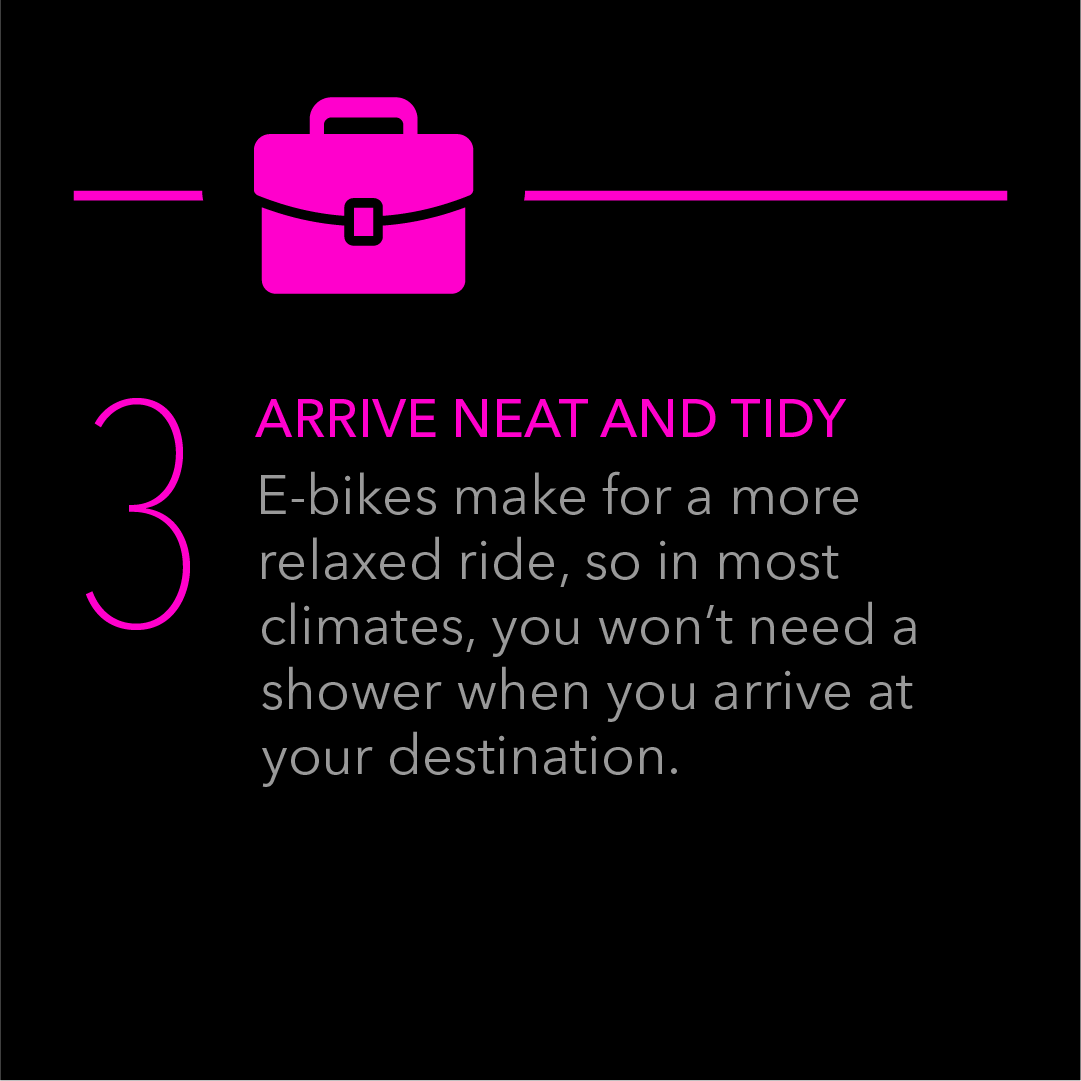
27% of non-cyclists who bought an e-bike switched to bicycle commuting for work, and the ability to look presentable on arrival is a big reason why. (The fact that commuting by e-bike is often faster than driving doesn’t hurt, either.)
Can anyone ride an e-bike?
We hear from a lot of people who used to cycle regularly, but fell out of the habit because of an injury, illness, or just getting older. More times than you can count, these folks have told us that an e-bike changed their lives by letting them ride again.
Because they don't require as much strength and endurance as conventional bikes, e-bikes make bike commuting and recreation available to many more people. They also allow riders of different fitness levels to ride together.
E-bikes can be lifesavers for those who can't get around town on foot but can cycle with assistance. Especially in dense urban areas, being able to park your bike right next to your destination can greatly enhance your mobility.
Put simply, e-bikes level the playing field by making cycling an option for a broader segment of the population.
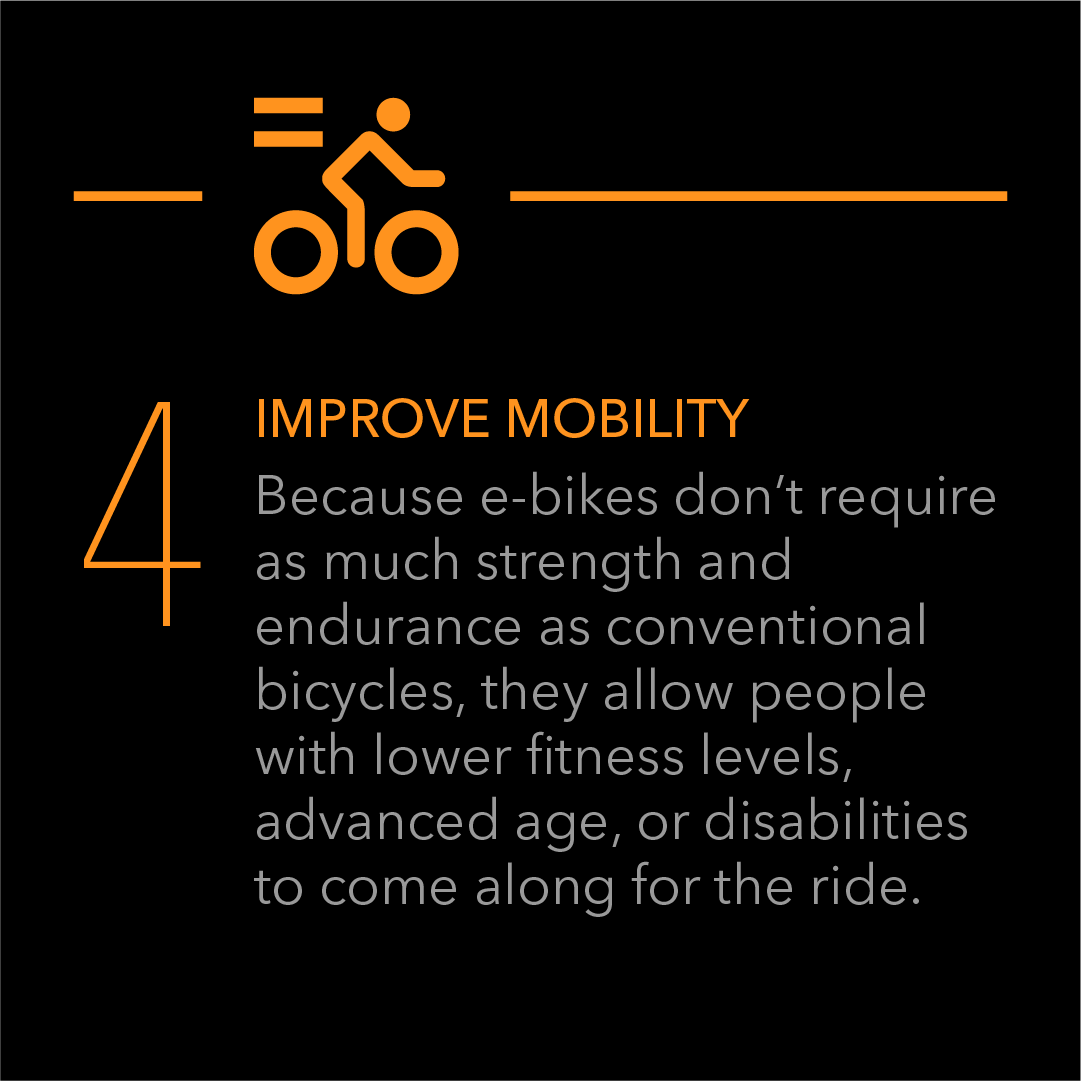
Are e-bikes environmentally friendly?
Yes!
In a 2018 survey, e-bike owners said that 76 percent of their trips via e-bike would have otherwise been made by car.
Since e-bikes produce less than 1/10 the carbon emissions of cars (including during battery charging), riding an e-bike slashes your production of greenhouse gases. Every time you replace a car trip with an e-bike ride, you're helping to combat climate change and air pollution.
One study found that, on average, an e-bike will reduce an individual's emissions from transportation by at least 0.21 metric tons CO2 per year.
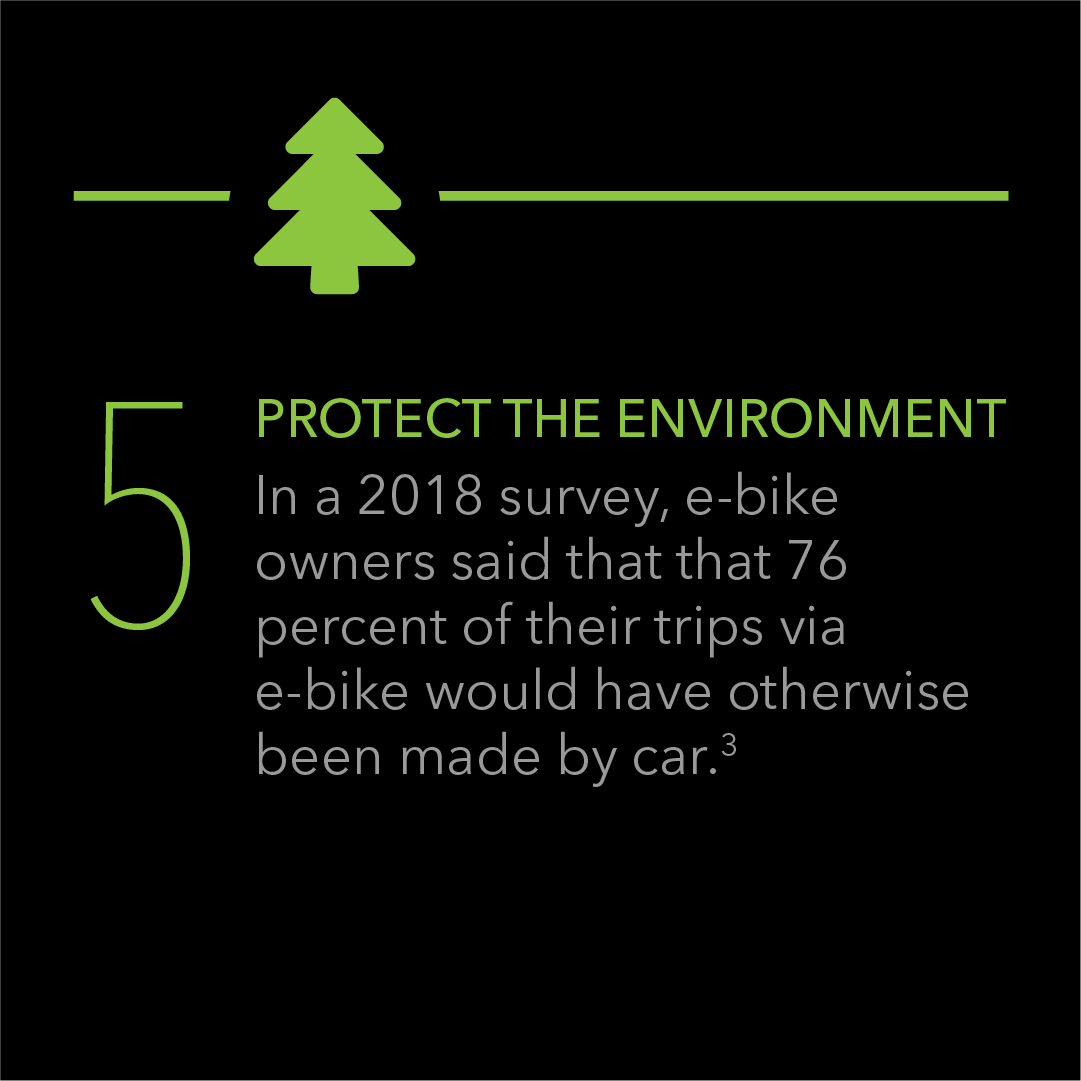
Bonus question: Is the "e-bike smile" a real thing?
Yep, 100%.
The best way to learn more about that is to visit your local e-bike dealer for a test ride. Then you'll really get it!
Find your nearest Tern dealer here.
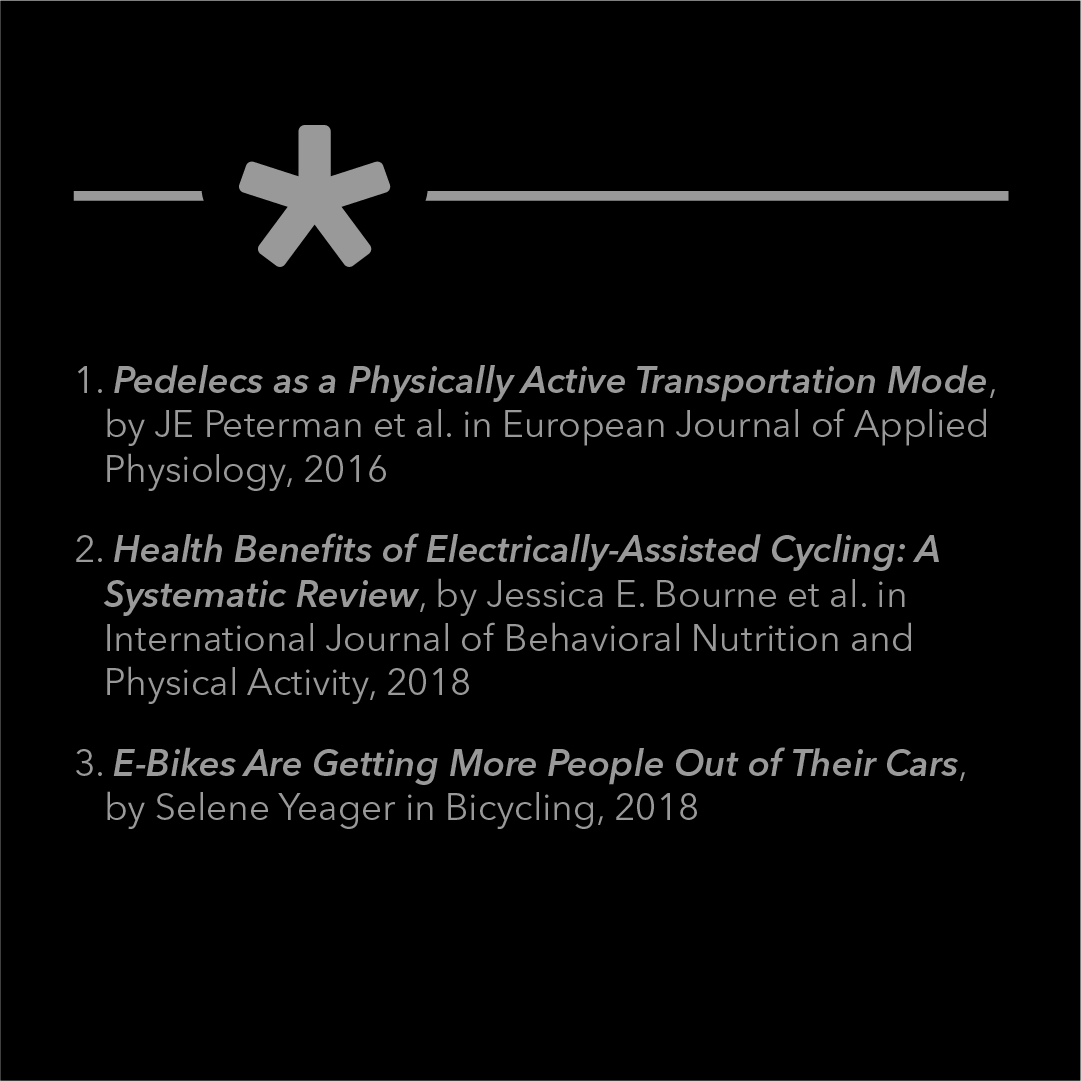 1. Pedelecs as a Physically Active Transportation Mode
1. Pedelecs as a Physically Active Transportation Mode
2. Health Benefits of Electrically-Assisted Cycling: A Systematic Review
3. E-Bikes Are Getting More People Out of Their Cars
